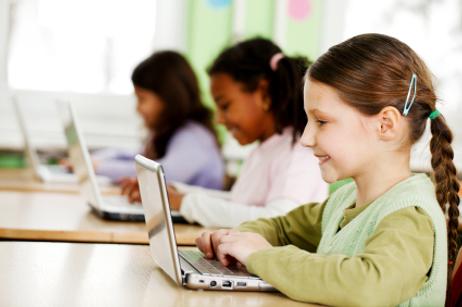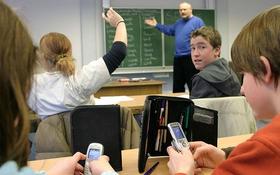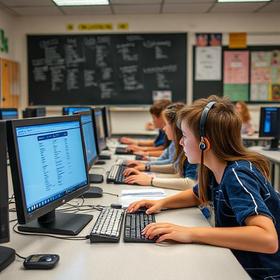Today's children must be prepared for tomorrow's demands. Considering technology's paramount role in nearly every career and industry, developing technological fluency is important for every child.
Understanding the relationship between technology and education, public schools have begun to incorporate innovative laptop programs to help improve student learning and performance. According to ERIC Digest, laptop programs have been part of organized education practices since 1988; however, these laptop opportunities have only recently gained national popularity in the past few years.
By incorporating laptops into public school classrooms, teachers can enhance the curriculum, providing students extensive research opportunities, access to up-to-date information, and many other learning benefits.
The Learning Benefits of Laptop Programs
As ERIC Digest further reveals, several leading computer companies have actively engaged in research to evaluate the benefits of laptops in public schools. In examining the perks, researchers and instructors report educational advantages, such as:
- Textbooks are expensive and often outdated, but students can engage in up-to-date research through the internet with laptops.
- Students can reinforce their lessons through their laptop's technological tools, including study games, class-specific discussion blogs, and other digital resources.
- Students can edit and correct their writing with greater ease, as the laptops provide students with instant dictionaries, spell-checking tools, and thesaurus resources.
- Students can become versed in technological tools, which will help provide students with greater preparation for their technology-based careers in the future.
- Students from different financial backgrounds can have equitable access to computer technology, which equalizes learning in any diverse classroom.
Specifically, as ERIC Digest articulates, "For many schools, the primary advantage of laptops over desktops is in creating opportunities for all students to have access to a computer both during and outside of the school day." If students do not have access to computers or the Internet at home, access to these resources from laptop programs can open up the entire spectrum of higher-level thinking, learning, and analysis.
- Schools with laptop programs are experimenting with various strategies to provide students with these benefits.
- Specifically, according to ERIC Digest's report on Microsoft's ongoing study of "Anytime Anywhere Learning," public schools and students can benefit from five specific usage models. The five usage models of common public school/classroom laptop programs include:
- Each student is equally provided with his or her own laptop for home and school use.
- Classes can purchase a set of laptops to be shared among class sections and/or teachers.
- Laptops can be dispersed in a single classroom, resulting in some students with laptops and others without laptops.
- Mixed combinations of the aforementioned models
Laptops in Action: How Public Schools Are Making the Technology Work
According to CNET News, Apple has been working to provide middle school students in select public schools around the country with Apple Notebooks since 2002. Due to the success reported by the middle schools, Apple and state educational leaders have also decided to extend the laptop program to all public high school students.
In cooperation with Apple's new program, Maine has become the very first state in the country to declare its commitment to providing all students in grades 7-12 with a laptop. Subsequently, the Maine Department of Education has recently placed an order for more than 64,000 Apple MacBooks, and school leaders anticipate that they will be ordering thousands more.
Why is Maine deeply committed to providing its students with laptops? Based on their observations, middle school students with laptops demonstrated increased learning, attention, attitude, and achievement. Maine's program will provide all 7-12 students with a laptop that can be used at home and school. The school's laptops will be returned at the end of the year.
More and more states across the country are adopting laptop programs for their public schools. Inquire with your school district regarding their laptop intentions and how your middle or high school child can benefit from the new programs.
Questions? Contact us on Twitter. @publicschoolreview













